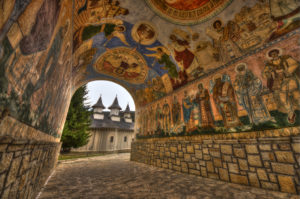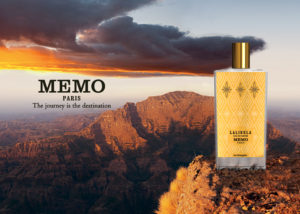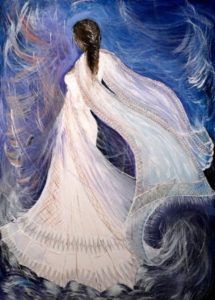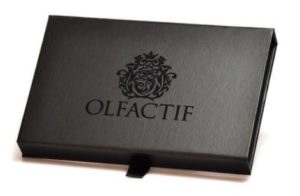
Gebre Mesqel Lalibela Wikipedia
According to legend, Gebre Mesqel Lalibela (1162 – 1221 C.E.), medieval Ethiopian prince and saint, was born surrounded by the sweet fragrance of honey, wild flowers and frankincense. The scent attracted a swarm of bees that did not harm the infant. The bees and the beautiful fragrances were believed to be omens foretelling the sovereignty of the child. The prince grew in wisdom and sanctity, but his half sister and older half brother, King Harbay, fearing the prince’s popularity, poisoned their younger sibling. Prince Lalibela lingered in a coma for three days. Nearing death he dreamed of a New Jerusalem and was given directions by G-d to hew eleven churches from the solid, pink volcanic tuff that surrounded the city of Roha (the city known today as Lalibela), the capital of the Ethiopian Zagwe dynasty (900 – 1270 C.E.). Eventually the prince recovered and the repentant king ceded the throne to his brother.

Labila Church shutterstock
King Lalibela was true to the command he received in his vision. Some say that the eleven cave-like churches were carved from rock in a single night, with the help of angels. Others contend that men worked during the day and angels took over after dark. We know that the monolithic buildings, excavated from the mountainous terrain at approximately 2,800 meters above sea level, were dug out of solid rock, eventually rising from excavated pits and grottos to heights of approximately 40 feet. The roofs of many of the churches were designed to be even with the surface of the earth and the buildings were (and still are) connected to each other via underground passageways. In 1978, UNESCO designated Lalibela and its ancient monolithic churches a World Heritage Site. Thousands of tourists visit the area every year and pilgrims flock to the Ethiopian Orthodox Tewahido Christian ceremonies. On feast days clouds of incense accompany the processions and swirl through the subterranean sanctuaries during the ancient nocturnal rites. Despite the colonial and civil wars that have ravaged the country since at least the middle of the 19th century, Ethiopia has maintained a solid export business in beeswax, honey, coffee, coconut, palm and seed oils and petroleum. The country leads the world in production of frankincense and myrrh. Over the past ten years Ethiopia has become the second largest African exporter of cut flowers, specializing in roses for the European market.

John and Clara Molloy Memo Paris (photo courtesy of Clara Molloy)
Clara and John Molloy of Memo Paris brought Lalibela to life as a fragrance. In 2007 the Molloys launched their perfume house – Memo Paris – the name referencing memories of adventures, destinations and travel.

Aliénor Massenet
That same year, perfumer Aliénor Massenet created Lalibela as part of Memo’s Les Echappees series.

Memo Paris Landscape Lalibela (photo Memo Paris)
The perfume recalls Ethiopia’s indigenous and agricultural flora, the ancient land itself and the mysteries and myths surrounding the churches of Lalibela.

Painting: Afewerk Tekle
When I wear Lalibela I am immediately enveloped by an exotic floral incense, an olfactory hymn colored by the deep sonority of dark, velvety red-purple roses, sweetened with a breath of fragrant Maxillaria tenuifolia, the coconut orchid. I experience a peculiar moist effect similar to that of moss on cool cavern walls or dew on the petals of a rose and am grounded by the scent of patchouli. This opening prayer lasts an hour or so, evolving into a meditation on jasmine, vanilla and labdanum.

Painting: Afewerk Tekle
The warm heart of the fragrance continues for a full day, fading at last to a memory of frankincense, tobacco and vanilla. Lalibela is a powerful, mystical and gently pervasive perfume recalling photos of pilgrims, chanting and praying in darkened, rock hewn grottos as patterns of sunlight stream through cross shaped openings in the walls, the light dancing with the smoky incense, moving with the prayers of the faithful. Notes: Coconut orchid, Rose, Jasmine absolute, Oil of Indonesian patchouli, Rockrose absolute, Vanilla, Tobacco absolute, Frankincense, Labdanum resin.
I received my sample of Memo Paris Lalibela as part of the January 2017 offering from Tara Swords at Olfactif. Thank you! My opinions are my own.
Gail Gross – Sr. Contributor
Art Direction: Afewerk Tekle was Ethiopa’s most celebrated artist and was known for his paintings of African and Christian themes.

We have a readers’ choice draw! Thanks to the generosity of Europerfumes we have one 75 ml bottle of Memo Lalibela.

Also, thanks to Olfactif.com we have the January 2017 selection that includes the unisex samples of Memo Paris Lalibela, Amouage Lilac Love, The Sum The Mauve and Men’s trio of memo Russian Leather, Etat Libre D’Orange Attaquer Le Soleil and Memoires de Mustique from Eight and Bob.
A choice of bottle or coffret is available to one registered reader who is a resident of the US (be sure to register or your comment will not count). To be eligible for the draw please let us know what appeals to you about Memo Paris Lalibela, if you have a favorite Memo Paris Perfume and what you learned from Gail’s review. The draw for the two winners will be random unless there is a reader that opts for the two Olfactif sets 6 x 2.5ml Sprayers. Draw closes 1/23/2016
We announce the winners only on site and on our Facebook page, so Like Cafleurebon and use our RSS feed…or your dream prize will be just spilled perfume
